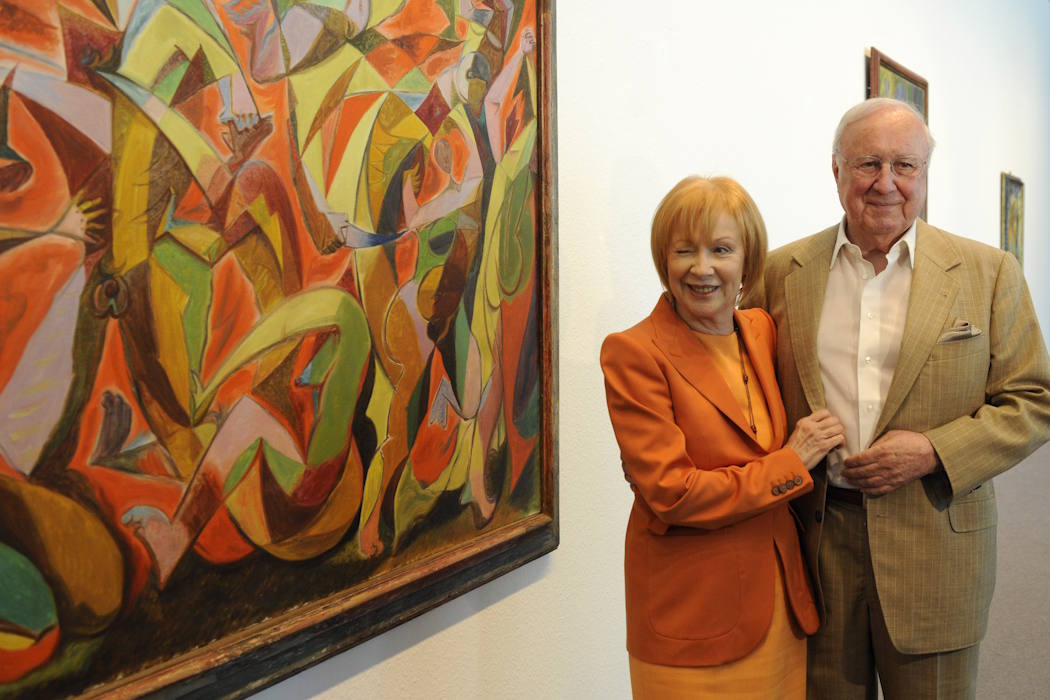Since 17 October 2025, the Neue Nationalgalerie, in cooperation with the Central Archive, has been showing the exhibition ‘Max Ernst to Dorothea Tanning: Networks of Surrealism. Provenances of the Ulla and Heiner Pietzsch Collection’. One hundred years after the ‘First Manifesto of Surrealism’ (1924), the exhibition offers new insights into the wide-ranging networks of this international art movement of the 20th century. The focus is on both the biographies of the works and the lives of key female artists, dealers and collectors of Surrealism.
Fig. above: Ulla and Heiner Pietzsch at the opening of the exhibition ‘Bilderträume. Works from the Ulla and Heiner Pietzsch Collection’ with André Masson, Massacre, 1931, © VG Bild-Kunst, Bonn 2025, photo: ddp/ Axel Schmidt
Based on a representative selection of paintings and sculptures by artists such as Leonora Carrington, Salvador Dalí, Max Ernst, Leonor Fini, René Magritte, Joan Miró and Dorothea Tanning, the exhibition presents the results of a research project conducted in collaboration with the State of Berlin on the provenance of artworks from the collection of Ulla and Heiner Pietzsch. The exhibition not only reveals the diverse paths taken by Surrealist artworks, especially in the 1930s and 1940s, but also illustrates how historical circumstances, personal relationships and networks contributed to the spread of this international movement.
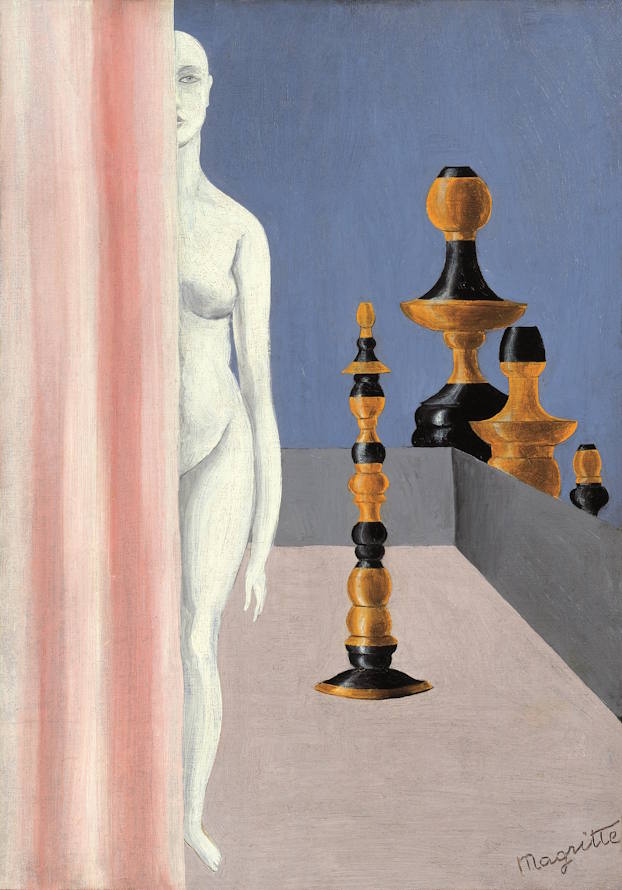
Since January 2023, around 100 artworks from the Ulla and Heiner Pietzsch Collection, created before 1945, have been systematically examined for their provenance and ownership history in order to rule out the possibility that they include cultural assets seized as a result of Nazi persecution, particularly those formerly owned by Jews. The works include key paintings by artists such as Salvador Dalí, Yves Tanguy, Max Ernst, André Masson, Joan Miró and Dorothea Tanning, which the Pietzsch couple acquired on the international art market through galleries, dealers and auction houses from the 1970s to the 2000s. In 2010, the Pietzsch couple donated their high-calibre collection to the State of Berlin, which has since been on permanent loan to the Neue Nationalgalerie. The core of the collection consists of works of Surrealism and Abstract Expressionism from the New York School.
The results of this project, carried out by the Central Archives to investigate and verify the provenance of the artworks, will be presented as part of the exhibition.
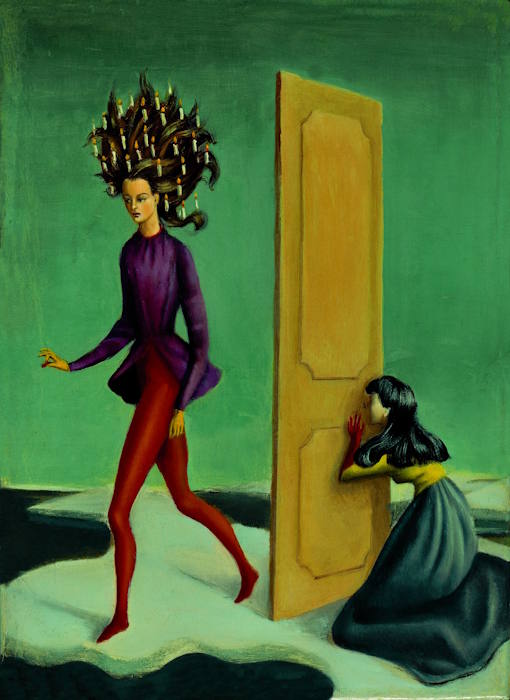
The exhibition traces in three sections the eventful journeys of the paintings and sculptures, which took them from Paris to Brussels and other European cities, through the years of National Socialism and the Second World War, and finally to exile in Mexico and the United States. The circle of Surrealist women was characterised by complex relationships in which friendships, love affairs and business connections often overlapped. Accordingly, the works also circulated through informal channels. The occupation of France by the German Wehrmacht from 1940 onwards forced numerous Surrealist artists, collectors and dealers to flee. Here, too, relationships proved useful. Many left Europe and emigrated to the United States, among other places, while others were denied visas and had to go into hiding in the unoccupied part of France. Some were able to take their works with them, while others had to leave them behind.
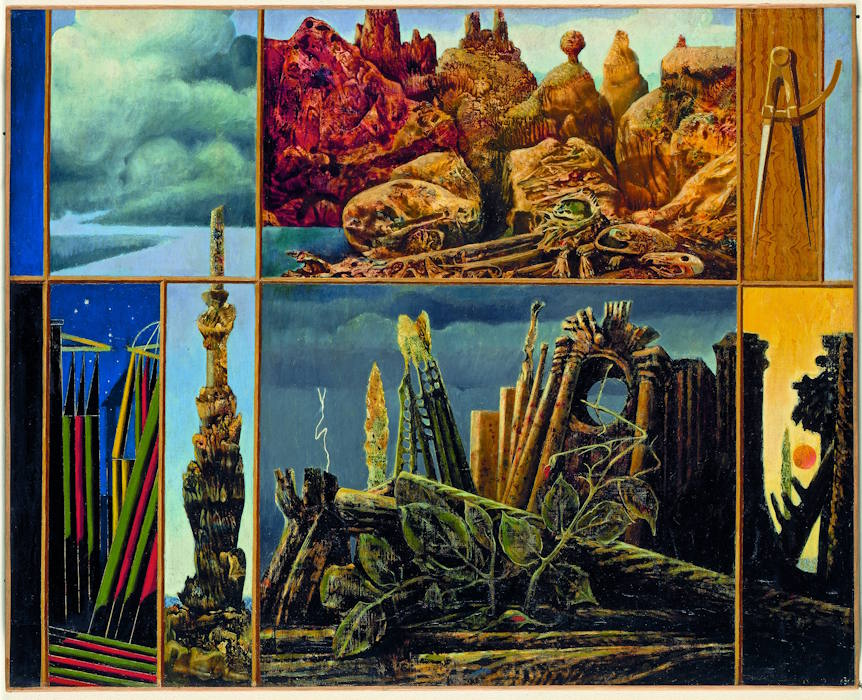
This phase, marked by changes of location, is directly reflected in the provenance of the artworks. In a variety of ways, the biographies of the individual objects bear witness to friendships and trade relations, as well as loss, persecution and new beginnings. Far beyond the individual stories of the works, the object biographies offer visitors a deep insight into the multifaceted networks of the Surrealist movement and the major political challenges of the time.
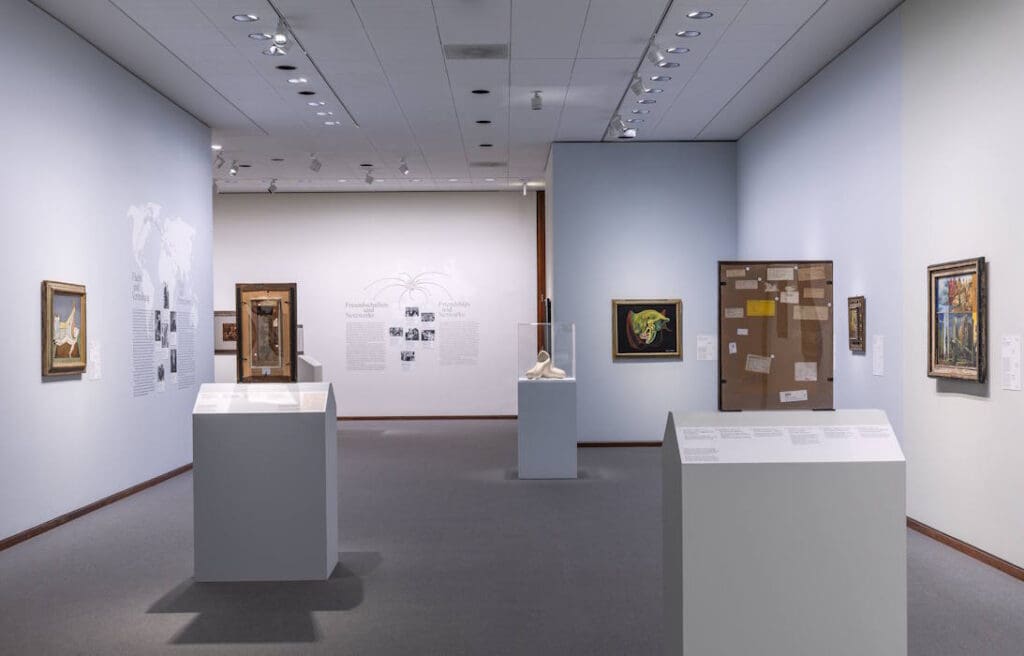
The special exhibition on the lower collection floor of the Neue Nationalgalerie brings together a selection of 26 works from the collection of Ulla and Heiner Pietzsch, including Max Ernst’s ‘Gloomy Forest and Bird’ (1927) and his ‘Painting for Young People’ (1943), André Masson’s large-format ‘Massacre’ (1931/32), Leonor Fini’s ‘Two Women’ (1939), Joan Miró’s ‘The Arrow Pierces the Smoke’ (1926) and Dorothea Tanning’s ‘Tension’ (1942).
Artists featured in the exhibition:
Hans Arp, Victor Brauner, André Breton, Salvador Dalí, Oscar Domínguez, Max Ernst, Leonor Fini, Jacques Lipchitz, René Magritte, André Masson, Roberto Matta, Joan Miró, Wolfgang Paalen, Pierre Roy, Yves Tanguy, Dorothea Tanning, Tristan Tzara.
A brochure accompanying the exhibition will be published in the Central Archive’s series “Begleithefte zur Provenienzforschung” (Accompanying Booklets on Provenance Research), which presents around 15 exemplary object biographies and documents the provenance of all 26 works in the exhibition researched in the project. The results of the provenance research project will be published digitally online at the start of the exhibition: recherche.smb.museum
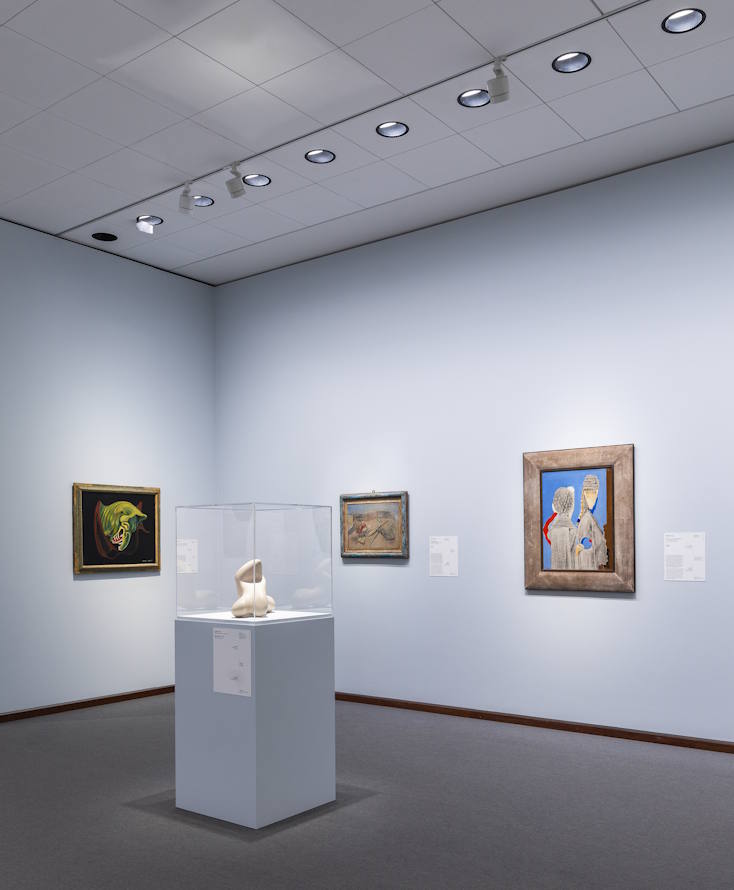
Max Ernst to Dorothea Tanning is curated by Maike Steinkamp, research assistant at the Neue Nationalgalerie, Lisa Hackmann and Sven Haase, research assistants for provenance research at the Central Archive. Curatorial assistant: Ricarda Bergmann, Neue Nationalgalerie. Research assistant: Sara Sophie Biever, Central Archive.
WHEN?
Exhibition dates: Friday, 17 October 2025 – Sunday, 1 March 2026
Opening hours:
Tuesday – Wednesday 10 a.m. – 6 p.m.
Thursday 10 a.m. – 8 p.m.
Friday – Sunday 10 a.m. – 6 p.m.
Monday closed
WHERE?
Neue Nationalgalerie
Potsdamer Straße 50
10785 Berlin


